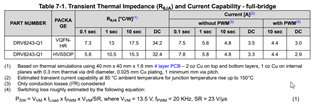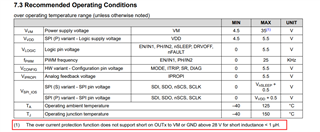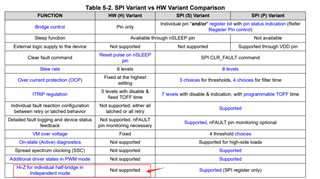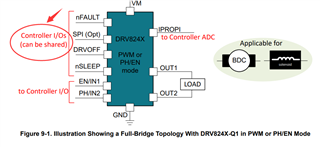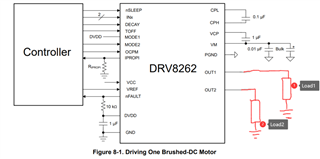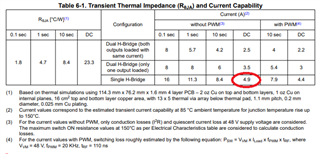Other Parts Discussed in Thread: DRV8262-Q1, DRV8244-Q1, DRV8243-Q1, DRV8245-Q1, DRV8245H-Q1EVM, DRV8262
Hello experts.
The current project wants to use the DRV8873-Q1 to drive a full-bridge brushed DC motor. The input voltage is 24V and the current is 5A. The ambient temperature is -40℃~85℃, can the DRV8873-Q1 meet the requirements?I'm having some difficulty calculating the junction temperature rise because calculating the temperature rise according to 5A would exceed the maximum junction temperature. How do I calculate this? Thanks.


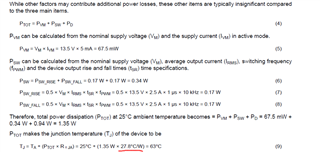
How do I calculate the junction temperature rise TJ at 85°C with a current of 5A, following the method of power calculation in the above diagram?


